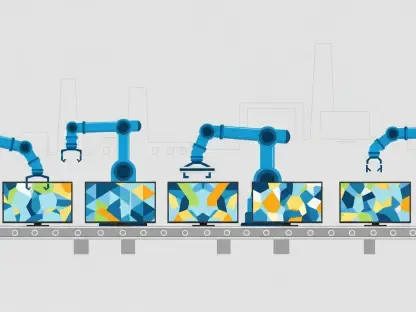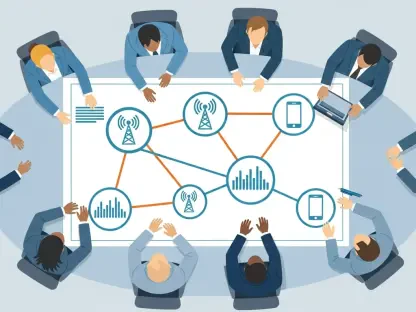In the rapidly evolving field of telecommunications, having insights from an industry veteran like Vladislav Zaimov is invaluable. Vladislav Zaimov, an expert in enterprise telecommunications and risk management of vulnerable networks, has played a pivotal role in shaping the future of telecom networks at BT. His deep understanding of digital transformation provides a comprehensive perspective on the challenges and opportunities that accompany such significant changes.
Can you elaborate on the specific elements that BT built into its enterprise products to foresee the need for distributed workloads and data sovereignty?
BT foresaw the importance of distributed workloads and data sovereignty by integrating flexibility and security into our enterprise products. For instance, we focused on architectures that support multi-regional data handling and comply with local regulations as data travels across borders. These elements ensure our systems are adaptable to meet diverse operational needs and regulatory requirements, emphasizing resilience and independence in data management.
At what point did BT realize AI would play a significant role in digital transformation, and how did that realization change BT’s approach?
The role of AI became apparent when the speed of technological advancement demanded smarter solutions. Initially, AI was not on our radar to such an extent, but as it developed, it drove our transformation to cater to dynamic, intelligent networks. This led us to invest heavily in AI-ready infrastructure, creating networks that could harness AI to optimize performance, predict faults, and enhance customer experience.
What are some of the major benefits you’ve observed from transitioning to an end-to-end digital infrastructure?
The digital transformation has allowed BT to streamline its operations significantly. We’ve seen improved efficiency and innovation, enabling faster deployment of services and enhanced customer interaction. Additionally, the move towards digital has helped us realize cost savings and contribute to sustainability efforts through reduced energy consumption and optimized resources.
What challenges did you face when trying to change BT’s longstanding company culture and employee mindset for digital transformation?
Transforming BT’s culture presented challenges, especially since employees were accustomed to more traditional roles and processes. Encouraging a startup-like mentality required us to rethink ownership structures and adopt agile methodologies. Resistance stemmed from a deep-rooted habit of domain ownership, but overcoming this involved extensive training and cultural engagement initiatives aimed at fostering adaptability and openness.
How did BT handle the transition from siloed, product-centric teams to shared, platform-based models?
Transitioning to a platform-based model necessitated breaking down silos to foster collaboration across teams. We implemented cross-functional teams and created shared goals to align everyone towards the company’s broader objectives. This shift enabled a focus on cohesive service delivery rather than isolated product development, improving innovation and accelerating time-to-market.
What strategies would you recommend for getting employees to embrace a new culture of “letting go” of their previously owned domains?
Successful cultural transition comes from clear communication and providing a vision of the benefits. It’s crucial to offer support through retraining and empower employees by redefining roles to emphasize teamwork over individual ownership. Recognition and incentives for collaborative efforts can motivate employees to embrace change, seeing it as an opportunity for growth and innovation.
Which specific skills did BT find were lacking during the transition, and how did you address this gap?
We noted a deficiency in skills related to microservices and software-centric approaches. To bridge this gap, BT invested in comprehensive training programs focusing on modern software languages and development practices. Hiring new talent with these skills was essential, along with upskilling existing employees to adapt to a more software-driven network environment, fortifying our workforce for future challenges.
Can you explain the shift from an operations mentality to a NetSecDevOps approach at BT?
Moving from traditional operations to NetSecDevOps involved a change in mindset towards integrated development, security, and operations. We aimed to ensure collaboration across departments, utilizing automated processes and shared responsibilities. This approach not only enhances efficiency but also strengthens security protocols, allowing for rapid adaptability in network management.
How does BT plan to tackle the current skills challenge in the telecommunications industry?
BT is addressing the skills challenge by establishing partnerships with academic institutions to foster skill development from the ground up. We’re investing in programs that nurture talent in modern software practices while promoting continuous learning within the company. This dual approach ensures a steady pipeline of skilled professionals equipped to handle digital transformation and its demands.
What advice would you give to new entrants in the telecommunications field about modern developmental languages and foundational skills?
Newcomers should focus on mastering modern programming languages like Python or JavaScript, complemented by foundational network knowledge and security best practices. Understanding the connectivity between software and network architecture is vital. It’s also important to cultivate analytical skills to interpret data effectively and contribute to innovative solutions in the telecommunications landscape.









